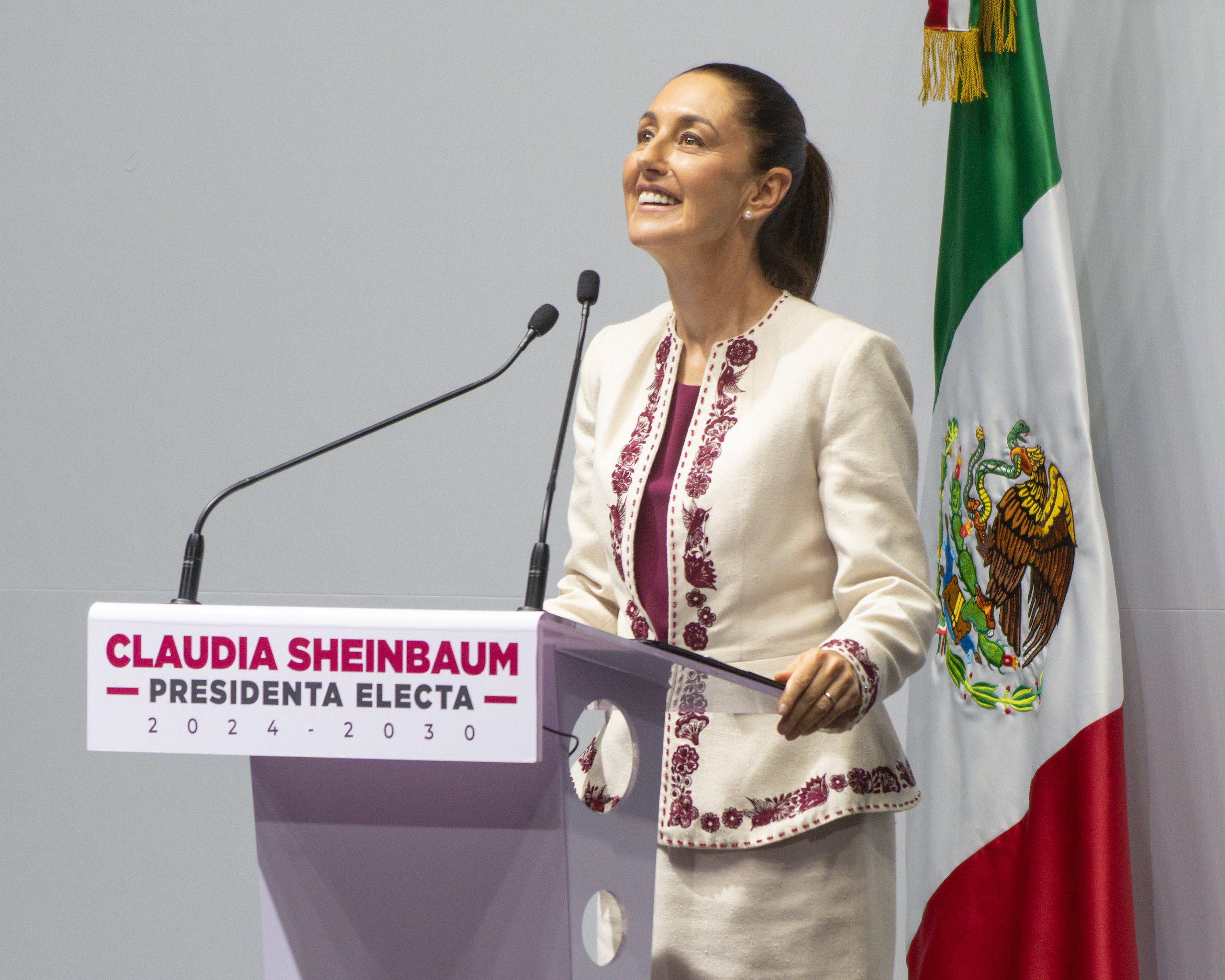Over the past five years, global supply chains have had to adapt to a number of significant changes, among them delays and disruptions brought by the Covid-19 pandemic, trade tensions between the world’s two largest economies, and the impacts and decoupling that have followed Russia’s invasion of Ukraine.
Such global shocks have prompted a growing number of international companies to consider relocating their operations closer to their main markets, in order to lower production and shipping costs, and reduce their exposure to supply chain risks – a trend that has become known as “nearshoring”.
In recent years, the phenomenon has seen companies turn their attention towards countries in Southeast Asia, Central and Eastern Europe, and Latin America, with the electronics, technology and automotive sectors among the industries at the forefront.
Perhaps most notable among these locations has been Mexico, where proximity and smooth access to the US market has attracted great interest and, in some areas, a surge in investments.
But despite generating countless headlines and stirring expectations, Mexico has been seen by analysts as not yet having taken full advantage of the opportunities nearshoring could present. They point to deficits in policies to strengthen strategic sectors, such as technology, and overcome constraints in the energy sector that ensure supply to attract investors.
Jesús Carrillo, director of economics at the Mexican Institute for Competitiveness (IMCO), an independent think-tank, describes a situation in which there have been more announcements of nearshoring intentions than concrete investments.
“There has not been such a large growth in investment, at least not as much as one would expect. The increases have been measured,” he tells Dialogue Earth.
Uncertainty among markets and investors has been stirred further by the recent passage of a highly controversial judicial reform promoted by outgoing President Andrés Manuel López Obrador. The overhaul has been pitched by its supporters as a way to democratise the judiciary by opening over 1,600 positions, including federal judge and Supreme Court justice appointments, up to public elections. But critics say this could politicise justice, and that it has reduced the specialised technical requirements for candidates.
Diego Marroquín, an expert in US-Mexico trade with the Wilson Center, wrote in a recent analysis for the think-tank that the reform “could seriously challenge North America’s long-term competitiveness and nearshoring potential” and “jeopardise billions in US and Canadian investments in Mexico.” He added that it could also complicate the 2026 review of the US-Mexico-Canada Agreement, the trade deal that has been a main attraction for nearshoring firms looking to Mexico.
Progress, optimism and key investments
Assessing the impact of nearshoringto date in Mexico is challenging. One can analyse the flows of foreign direct investment (FDI) entering the country or measure the increase in demand for industrial parks where new projects can be sited. Although neither of these indicators is a completely accurate measurement, both provide useful data to estimate its scope.
In July 2023, the Mexican Association of Private Industrial Parks (AMPIP) forecast the arrival of 453 new companies in the country by 2025 – 20% of which were expected to come from China – representing an annual growth in new businesses 9.1% above the average of the 2018–2022 period. In parallel, AMPIP reported in 2023 one of the lowest percentages (2.2%) of availability in industrial spaces since 2019, indicating that the quotas are being used.
Amid this rising demand, a recent study by AMPIP estimated that as much as USD 8.6 billion of private investment could arrive in the construction of 128 industrial parks across the country by 2030. The recently inaugurated president, Claudia Sheinbaum, also made promises during her election campaign to support this expansion. Some are already underway, for example, the Isthmus of Tehuantepec Interoceanic Corridor, a trade and transit route under construction since 2019 with the aim of developing the south and south-east of Mexico. The construction of 10 industrial parks is planned as part of the project, alongside the renovation of two ports and the reconstruction of a railway.
Nearshoring investments into Mexico so far have not been limited to North American companies looking to bring production closer to home. Among them is the Argentine steel company Ternium, which in June 2023 announced plans to invest USD 3.2 billion in a new steel plant in Nuevo León, while its compatriot, the e-commerce giant Mercado Libre has plans to invest USD 2.45 billion in its systems and logistics in the country.
In February, AWS, a subsidiary of the US multinational Amazon, announced plans to invest over USD 5 billion into data centres in the centre of the country. But investments from electric vehicle makers Tesla, into a USD 4.5 billion factory, and China’s BYD are on hold, both reportedly stalling amid uncertainty in the run-up to the US elections in November.
Since 2023, various Chinese companies have also announced investments, most notably in car and auto parts manufacturing, to support access to the US market and serve the Mexican vehicle industry. Among them have been automakers SAIC Motor and BAI, which in 2023 announced factory projects, including for electric vehicle production, worth a total of USD 2.75 billion.
But such Chinese investors are also facing major hurdles to their plans in Mexico. Concerns have been voiced by US trade groups and politicians over the entry of lower-cost Chinese electric vehicles posing a threat to its own auto industry, with accusations that firms are using Mexico as a “backdoor” to its market via the countries’ free trade agreements. Earlier this year, both Canada and the US imposed 100% import tariffs on vehicles built in China, though these do not apply to those built by Chinese companies in Mexico – something that may change in the wake of November’s US elections and the looming USMCA renegotiations.
“We’ve been very, very clear about the strategic nature of this tariff review process,” US Trade Representative Katherine Tai told a White House press briefing in May. “We’re giving our workers and our businesses the opportunity to continue to compete and thrive in the face of an onslaught of really challenging measures and a challenging economic system coming from Beijing.”
Chinese officials and auto industry associations have decried the tariffs as protectionist and politically motivated, while its commerce ministry has responded by lodging a complaint against Canada at the World Trade Organization, claiming the country has disregarded trade rules.
Foreign direct investment: less optimism
Recent studies measuring FDI flows into Mexico offer a slightly less optimistic picture of the nearshoring trend.
In the first half of 2024, Mexico registered USD 31 billion dollars of FDI, a growth of 7% compared to the same period last year, which appears encouraging. But on closer analysis, it shows that the vast majority – USD 30.2 billion – of this investment was reinvestment of profits that did not return to their country of origin. This suggests that the country is not currently attracting a great number of new companies, but rather established firms are allocating their profits to reinvestments, whether for tax reasons, to renew equipment, expand their operations, or for other reasons.
Elsewhere, an analysis by US consultancy Kearney showed that of the global manufacturers that have chosen to relocate their operations since 2021, 79% have done so to the US, compared to 27% to Mexico.
Jordy Micheli, an academic in the economics department the Metropolitan Autonomous University in Mexico City, downplays the overall significance of nearshoring for the country, seeing it more as an intensification of existing patterns of investment.
“It will never replace traditional foreign investment. It is a structural process, Mexico is already inserted in a structure in which it is an important territory for these companies,” Micheli told Dialogue Earth. He also highlighted opportunities, as well as hurdles to realising them: “There are two important things: generating internal conditions and looking for companies that come. The interesting thing is that it will bring us new production lines that were not produced in the country before.”
Beyond attracting FDI, Mexico lacks a dedicated, overarching plan to maximise the benefits of nearshoring, though some sector-specific and general plans may address related priorities. Perhaps most notable is the Sonora Sustainable Energy Plan, launched in 2022, which includes: the construction of a solar plant set to be Latin America’s largest; the exploitation of the country’s potentially vast, but contested, lithium deposits; support for the production of electric vehicle parts; and the expansion of the north-western port of Guaymas to improve the transport of goods from Asia to North America.
Alongside aims to build more than 100 industrial parks, President Claudia Sheinbaum has also promised to invest in key infrastructure such as roads, ports and airports, and stated intentions to focus efforts on strategic sectors such as semiconductors, electronics and electric mobility.
These areas may align with some of the priorities of the current US administration, though the outcomes of its upcoming elections may change this.
In 2021, President Joe Biden’s government identified sectors such as semiconductors, high-capacity batteries, critical minerals and pharmaceuticals as critical, and announced measures to strengthen their supply chains. Since 2022, the United States has been working to integrate Mexico into these critical supply chains. During the 10th North American Leaders’ Summit in January 2023, the countries agreed to strengthen regional supply chains and encourage investment in key industries such as semiconductors and electric vehicle batteries. However, Mexico still does not have a specific strategy to turn these commitments into reality.
Seeking to calm choppy waters and clarify Mexico’s position, the secretary of economy, Marcelo Ebrard, recently told a business forum that the country will look to speed up the nearshoring process, and strongly suggested a convergence with US trade interests over those of China, promising to “mobilise all interests in favour of North America”.
Challenges and limitations
Amid the growing attention to nearshoring’s potential, analysts have also highlighted the significant challenges for Mexico that could jeopardise its aspirations. These include a lack of sufficient energy supply to support investment, water shortages in the north of the country where much industrial investment has been concentrated, and the need to improve infrastructure and incentives for attracting capital.
Added to this is the loss of more than 100,000 jobs near the country’s northern border in the last 18 months in the maquila industry – the term used for factories that assemble and manufacture for export – which represents 10% of jobs in the sector.
To maximise the potential of nearshoring, Mexico must address several pending tasks. A 2024 report by German think-tank the Konrad Adenauer Foundation suggests 12 key recommendations, including strengthening the institutional environment, fighting corruption and insecurity, increasing investment in infrastructure, training labour for high-tech sectors, and access to renewable energy.
Academic Carrillo believes that the Mexico approach must go beyond nearshoring, pointing out that overall economic growth depends on productive capacity: without adequate infrastructure and clear investment in key sectors, he says, Mexico could face long-term stagnation.









